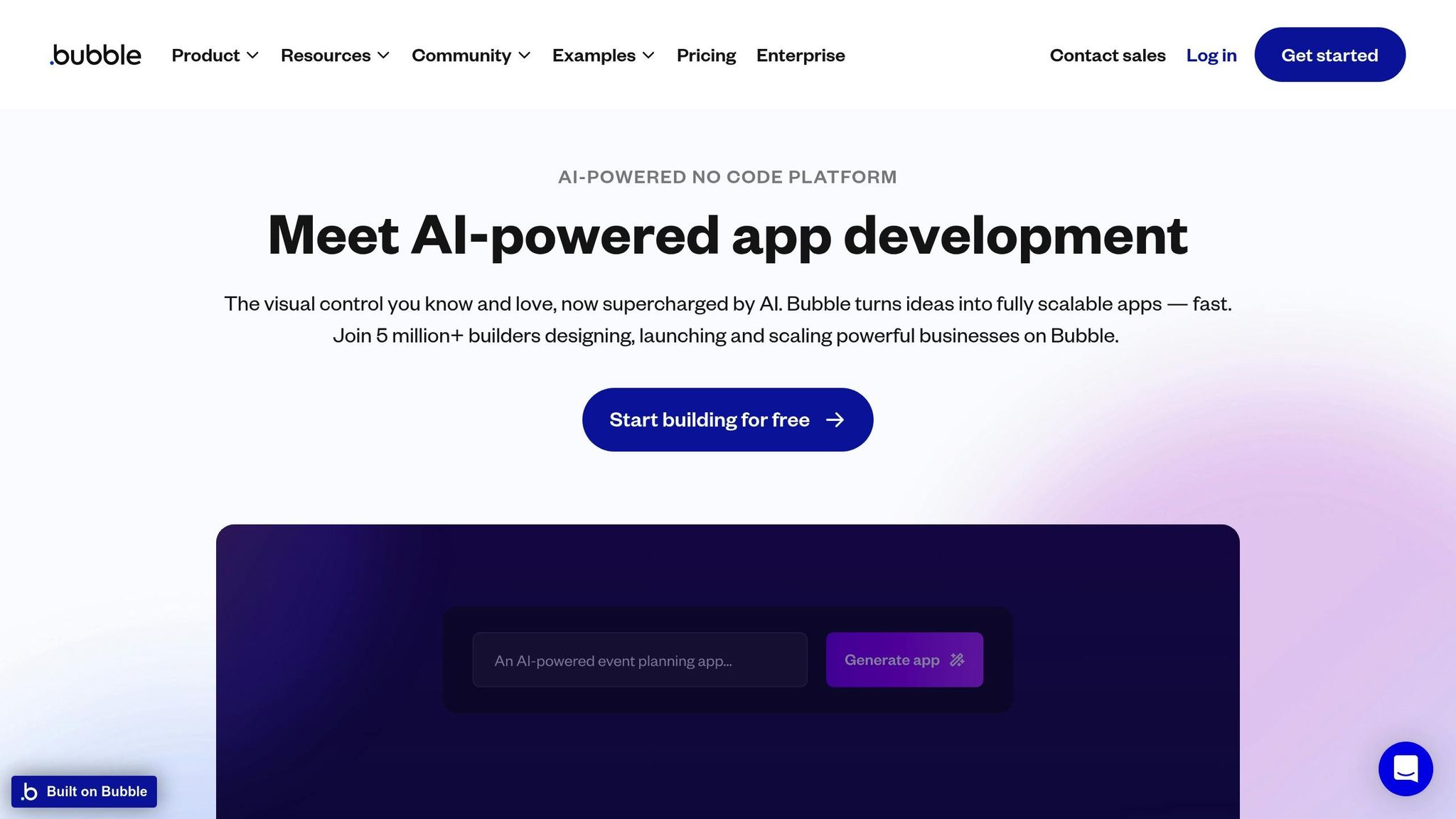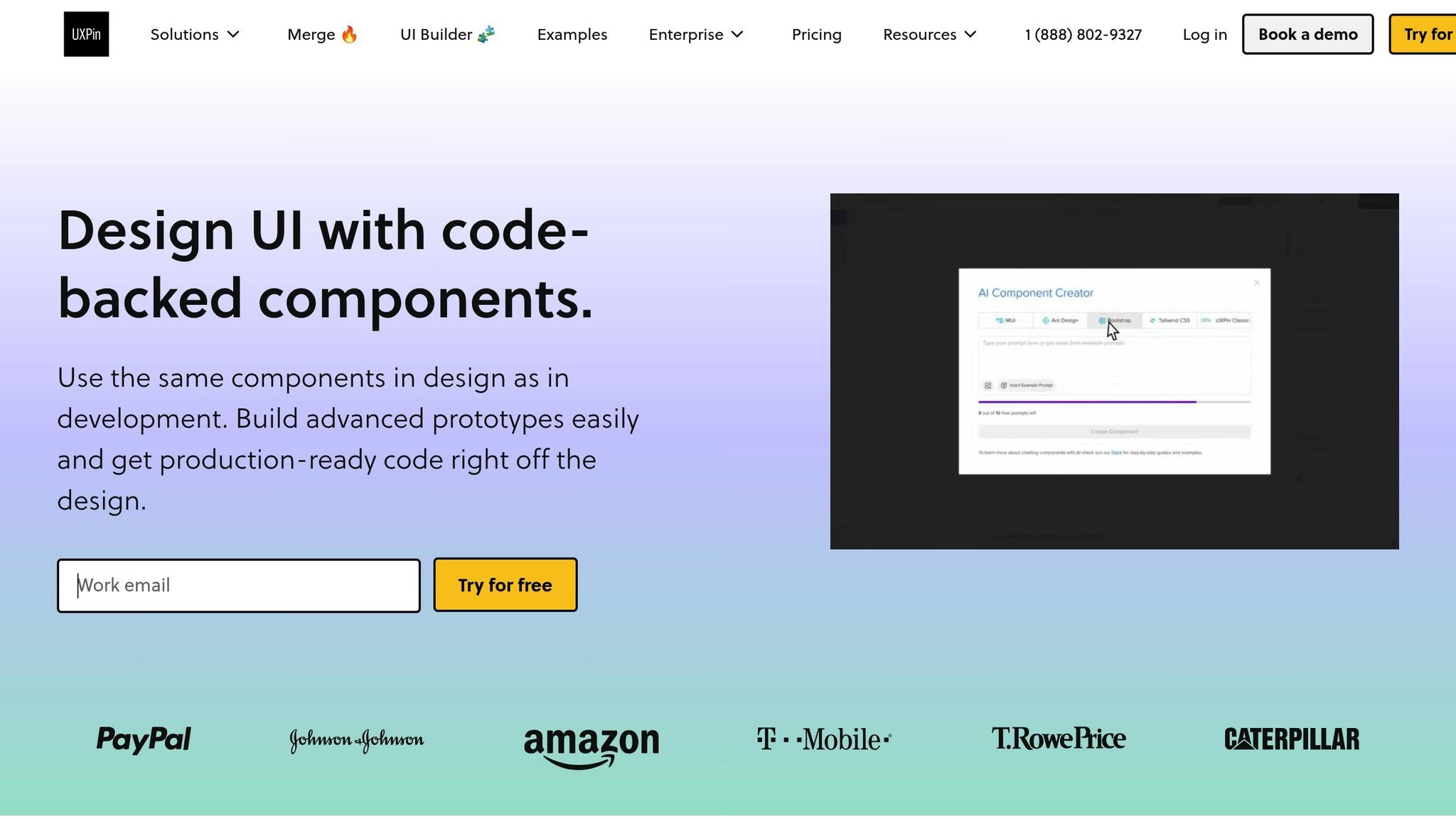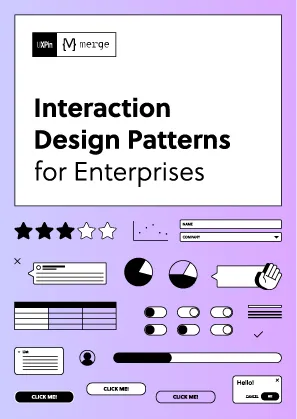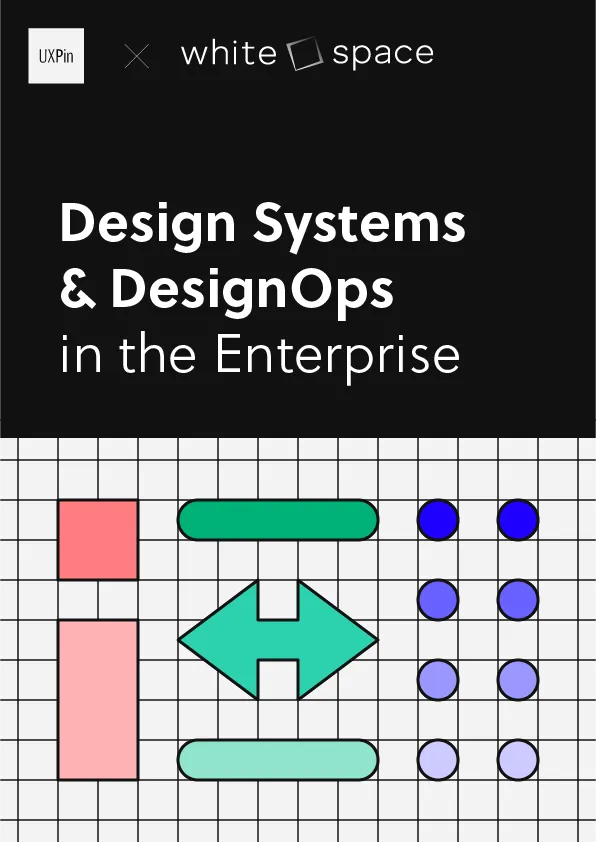Manually converting designs into code is slow, error-prone, and often inconsistent. No-code export tools solve this by automating the process, saving time, reducing errors, and ensuring design consistency. Tools like UXPin allow designers to generate production-ready React code in minutes, cutting development time by up to 50%.
Key Benefits:
- Faster Code Generation: Designs convert into clean, semantic code instantly.
- Better Collaboration: Designers and developers work together in real-time.
- Lower Costs: Reduces repetitive tasks and engineering hours by 30–50%.
- Consistent Results: Maintains design quality and responsiveness across devices.
No-code tools like UXPin are transforming workflows by bridging the gap between design and development, making projects faster, more efficient, and easier to manage.
Can I EXPORT CODE from Bubble, Webflow, No-Code Tools?

No-Code Export Tool Basics
No-code export tools are designed to transform visual designs into production-ready code automatically. By removing the need for manual coding, these tools save time while ensuring consistent, high-quality code output.
Design-to-Code Conversion Process
UXPin simplifies the process of turning designs into code with a straightforward, step-by-step approach. It begins by importing design files into the platform, where the tool analyzes the design’s components, elements, and their relationships. From there, it maps these visual elements to the appropriate code structures, producing clean HTML, CSS, and React components.
One standout feature of this automated process is its ability to handle responsive design seamlessly. The tool includes:
- Modern CSS flexible layouts
- Automatic detection of breakpoints
- Responsive image optimization
- Dynamic component adjustments
This automation dramatically cuts development time from days to mere minutes, all while maintaining exceptional quality.
Core Export Tool Functions
Today’s no-code export tools come equipped with several key features that enhance the design-to-code workflow:
| Function | Purpose | Impact |
|---|---|---|
| Component Mapping | Links design elements to code components | Ensures consistent implementation across projects |
| Design Token Support | Applies design tokens in the code | Simplifies theming and ensures visual consistency |
| Code Generation | Produces clean, semantic code | Delivers developer-friendly and maintainable output |
| Integration Support | Connects with development tools | Enables smooth incorporation into existing workflows |
The use of design tokens plays a critical role in maintaining uniformity. UXPin automatically identifies and applies tokens for typography, colors, spacing, shadows, and component variants. These tokens are translated into code variables, preserving the design system throughout the process. Additionally, UXPin generates documentation for these tokens, making it easier for developers to understand and implement the design system.
Another major advantage is the ability to generate framework-specific code, such as React components. This ensures compatibility with modern development practices, including:
- Component-based architecture
- State management
- Interactive behaviors
- Responsive layouts
- Theme customization
These features integrate effortlessly into UXPin’s workflow, simplifying the design-to-code process and ensuring a smooth transition from design to development.
Using UXPin to Export Designs to Code

Design Import Steps
Start by importing your design files into UXPin to ensure the hierarchy, grouping, and naming conventions remain intact.
- Access the Import Feature: Open your UXPin dashboard and click on "Import Design."
- Choose Import Source: Connect your design source account or upload files directly to bring in your designs.
- Verify Components: Double-check the imported elements to ensure everything is accurate before moving forward with the code export process.
Once your designs are imported, it’s time to configure design tokens to maintain styling consistency.
Design Token Configuration
Design tokens are key to keeping your styling consistent in the exported code. In fact, PayPal‘s design team showed how proper token configuration could cut design handoff-to-implementation time by half in 2022, saving significant time and effort.
| Token Type | Configuration Options | Impact on Export |
|---|---|---|
| Colors | Primary, secondary, and accent palettes | Creates CSS variables and theme constants |
| Typography | Font families, sizes, and weights | Produces reusable text styles |
| Spacing | Margins, padding, and grid units | Ensures consistent layout measurements |
| Interactive States | Hover, active, and focus styles | Generates state-based CSS classes |
With your design tokens set up, you’re ready to move on to the code export phase.
Code Export Process
The final step is exporting production-ready React components. Here’s how it works:
- Component Selection and Accessibility: Pick the elements you want to export. UXPin automatically generates semantic HTML, complete with ARIA labels for accessibility.
- Code Generation: Customize your export settings, including component architecture, file structure, styling preferences (like CSS-in-JS or separate stylesheets), and interactive behavior.
PayPal’s design team leveraged UXPin Merge to streamline this process, cutting their design-to-implementation timeline by 50%, which translated to saving about four weeks in product development. The exported code retains all design tokens, interactive states, and component relationships, making it ready for immediate integration into development workflows.
sbb-itb-f6354c6
Team and Business Impact of No-Code Export
Building on the idea of simplifying the design-to-code process, no-code tools are changing the game for workflows and outcomes. Beyond just improving technical tasks, these tools bring clear, measurable benefits to businesses.
Designer-Developer Workflow Updates
No-code tools bridge the gap between design and development by using shared, code-ready components. This alignment helps eliminate misunderstandings and ensures designs stay consistent throughout the entire development process.
"As a full stack design team, UXPin Merge is our primary tool when designing user experiences. We have fully integrated our custom-built React Design System and can design with our coded components. It has increased our productivity, quality, and consistency, streamlining our testing of layouts and the developer handoff process."
This kind of collaboration doesn’t just improve communication – it speeds up project delivery.
Project Timeline Reduction
One of the standout advantages of no-code tools is how much they shorten development timelines. By automatically converting design files into developer-ready code, teams can drastically cut the time spent on development.
"What used to take days to gather feedback now takes hours. Add in the time we’ve saved from not emailing back-and-forth and manually redlining, and we’ve probably cut months from development."
Design System Management
Managing design systems becomes far more efficient with no-code tools. Teams can ensure consistency by creating and updating UI components and design tokens that sync automatically across multiple projects.
Some of the key perks include:
- Standardized Components: Everyone uses the same coded elements, reducing inconsistencies.
- Automated Updates: Changes to design tokens automatically apply across the entire system.
- Quality Assurance: Accessibility standards and interaction patterns are consistently implemented.
This organized approach allows teams to scale their work while ensuring a seamless, high-quality user experience across all their products.
Conclusion: The Future of Design-to-Code Tools
The landscape of digital product development is being reshaped by no-code export tools, which simplify the often-complicated process of turning designs into functional code. With AI-driven features, these tools are not only improving collaboration but also enabling more streamlined and automated workflows.
Today’s tools go a step further by producing clean, framework-specific code. Features like automatic responsiveness and dynamic component generation are becoming the norm, making it easier for teams to tackle complex design-to-code tasks with less technical effort.
"When I used UXPin Merge, our engineering time was reduced by around 50%. Imagine how much money that saves across an enterprise-level organization with dozens of designers and hundreds of engineers."
The numbers back up this shift. The no-code development platform market is expected to grow at a compound annual growth rate (CAGR) of over 28% between 2023 and 2030.
Looking ahead, AI advancements promise to add even more capabilities, including:
- Handling complex interactions intelligently without needing explicit instructions
- Automating performance optimization
- Improving accessibility compliance
- Generating data-driven components with greater sophistication
These tools are also breaking down barriers for non-technical team members. By making digital product development more accessible, they allow for faster iteration and more creative problem-solving. Instead of getting bogged down by technical details, teams can focus on innovation and delivering exceptional user experiences.
The future of design-to-code tools lies in their ability to seamlessly integrate design and development. With ongoing progress in automated code generation and design token management, these tools are set to dissolve traditional boundaries between disciplines, paving the way for even more efficient and imaginative solutions.
FAQs
How do no-code export tools, like UXPin, help ensure the code is ready for production and stays true to the original design?
No-code export tools like UXPin make it easier to create production-ready code by allowing designers to work directly with the same reusable UI components that developers rely on. Since these components are built with actual code, the design aligns perfectly with the final product, cutting out the need for manual handoffs.
With a shared library of components, UXPin ensures consistency across designs while minimizing mistakes. This efficient workflow lets teams produce polished, developer-ready results without needing coding skills, saving time and effort throughout the product development process.
What are design tokens, and how do they help ensure consistency between design and development?
Design tokens are reusable, standardized building blocks like colors, typography, spacing, and shadows that connect design and code. They serve as a shared reference point, ensuring designers and developers work with the same values throughout a project.
By centralizing these elements, design tokens help maintain a consistent look and feel across your product. They also make updates a breeze – adjusting a token updates every instance where it’s applied, saving time and cutting down on mistakes. This system not only keeps your workflows more efficient but also strengthens collaboration between design and development teams.
How do no-code export tools improve collaboration between designers and developers?
No-code export tools make collaboration between designers and developers much easier by creating a shared foundation for their work. These tools simplify the handoff process, reducing misunderstandings and ensuring that designs are accurately transformed into code.
Take UXPin, for example. This platform allows teams to incorporate interactive, code-based components directly into their workflows. By eliminating the need for manual conversions, it speeds up feedback cycles, aligns teams more effectively, and helps move product development along faster – all while improving teamwork and communication.

